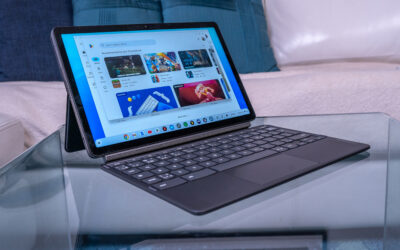Maintaining clean screens on your computer and TV is crucial to preserving sharp vision and extending the life of your electronics. Over time, dust, fingerprints, and smudges can gather, reducing the quality of your viewing experience and sometimes causing harm if left unattended. Frequent cleaning helps to avoid the accumulation of dirt that could damage the screen’s surface in addition to improving the screen’s aesthetic quality. This tutorial gives you useful instructions and advice on how to clean your computer and TV screens so they stay in perfect condition and don’t become damaged. The following techniques can help you achieve a flawless screen, regardless of whether you’re dealing with ordinary dust or persistent fingerprints.
Understanding the Importance of Cleaning Your Screens
It’s important to clean your computer and TV screens on a regular basis for a number of reasons. First and foremost, a clean screen improves the quality of your viewing experience by offering a crisp, clear display free from annoying fingerprints, dust, and smudges. Clarity is crucial for high-definition and 4K TVs, thus this is especially crucial.
Furthermore, you may increase the lifespan of your screens by keeping them clean. Over time, dust and grime accumulation may result in harm to the screen’s internal components or surface. Frequent maintenance keeps this accumulation at bay, extending the life of your gadgets’ peak performance.
Moreover, a tidy screen helps create a healthy atmosphere. Particularly in homes with several users or in public places like companies and schools, screens can contain bacteria and pathogens. Frequent cleaning encourages improved hygiene by lowering the possibility of spreading these bacteria.
Realizing how crucial screen cleaning is emphasizes the necessity of routine maintenance. It enhances your watching pleasure, extends the life of your electronics, and helps create a cleaner, healthier atmosphere.
Essential Tools and Materials
To effectively clean your TV and computer screens, you’ll need the right tools and materials. Here’s a list of essentials that will help you achieve a streak-free and spotless screen:
- Microfiber Cloths: These are gentle on screens and effective at removing dust, fingerprints, and smudges without scratching the surface.
- Distilled Water: Tap water can contain minerals that may leave streaks or residue. Distilled water is free of these impurities and safer for cleaning screens.
- Screen Cleaning Solution: Specially formulated screen cleaning solutions are available, designed to clean screens without causing damage. Avoid using household cleaners or alcohol-based products as they can harm the screen’s coating.
- Compressed Air: Useful for blowing away dust and debris from hard-to-reach areas, like the edges of the screen and between keys on a keyboard.
- Soft Brushes: Small, soft-bristled brushes can help gently remove dust from corners and crevices without scratching the screen.
- Cotton Swabs: Ideal for cleaning the edges of the screen and other small areas where a cloth might not reach.
- Lens Cleaning Wipes: Pre-moistened and safe for screens, these wipes can be handy for quick cleanups and removing smudges.
Preparing Your Screen for Cleaning
Proper preparation is key to safely and effectively cleaning your TV and computer screens. Follow these steps to get your screen ready for cleaning:
1. Turn Off and Unplug Your Device
- Ensure your TV or computer is turned off and unplugged before you start cleaning. This prevents any risk of electrical shock and allows you to see dust and smudges more clearly on the dark screen.
2. Allow the Screen to Cool Down
- If your device has been on for a while, give it some time to cool down. Cleaning a warm screen can cause the cleaning solution to evaporate too quickly, leading to streaks.
3. Gather Your Cleaning Supplies
- Collect all necessary tools and materials such as microfiber cloths, distilled water, screen cleaning solution, compressed air, soft brushes, and cotton swabs. Having everything ready will make the cleaning process smoother and more efficient.
4. Clear the Area
- Make sure the area around your device is free of clutter. This will give you enough space to move around and ensure you don’t accidentally knock over any items while cleaning.
5. Dust the Surface
- Use a can of compressed air or a soft brush to gently remove any loose dust and debris from the screen and surrounding areas. This initial dusting prevents you from spreading dust around when you start wiping the screen.
6. Wash Your Hands
- Clean your hands thoroughly before touching the screen to avoid transferring oils and dirt to the surface.
Step-by-Step Guide to Cleaning Your TV Screen
Cleaning your TV screen properly ensures you maintain its clarity and longevity. Follow these steps for a thorough and safe cleaning:
1. Turn Off and Unplug the TV
- Always start by turning off and unplugging your TV to avoid electrical hazards and make it easier to see dust and smudges on the screen.
2. Allow the Screen to Cool
- Let the screen cool down completely if it was recently in use. A cool screen is easier to clean without leaving streaks.
3. Dust the Screen with a Microfiber Cloth
- Use a dry microfiber cloth to gently wipe the screen and remove loose dust. Avoid pressing too hard to prevent damage to the screen.
4. Prepare the Cleaning Solution
- If using a commercial screen cleaner, follow the instructions on the label. For a DIY solution, mix distilled water with a small amount of white vinegar or isopropyl alcohol (in a 1:1 ratio). Ensure the mixture is mild to avoid damage.
5. Dampen the Cloth, Not the Screen
- Lightly dampen a microfiber cloth with the cleaning solution. Never spray the solution directly onto the screen, as this can cause moisture to seep into the device and cause damage.
6. Wipe the Screen Gently
- Using the damp cloth, gently wipe the screen in a circular motion to remove smudges and fingerprints. Avoid applying excessive pressure, which can harm the screen.
7. Clean the Frame and Surrounding Area
- Wipe down the TV’s frame and the surrounding area with the same cloth or a separate one to remove dust and dirt.
8. Dry the Screen
- Use a dry microfiber cloth to gently wipe the screen again, removing any remaining moisture and ensuring a streak-free finish.
9. Inspect the Screen
- Carefully inspect the screen for any remaining spots or streaks. If needed, repeat the cleaning process on those areas using a lightly dampened cloth.
10. Plug in and Turn On the TV
- Once you are satisfied with the cleaning, plug the TV back in and turn it on to enjoy a clear, spotless screen.
Step-by-Step Guide to Cleaning Your Computer Screen
Properly cleaning your computer screen is essential for maintaining its clarity and longevity. Follow these steps for a thorough and safe cleaning process:
1. Turn Off and Unplug Your Computer
- Ensure your computer is turned off and unplugged before you start cleaning. This prevents any risk of electrical shock and allows you to see dust and smudges more clearly on the dark screen.
2. Allow the Screen to Cool
- If your device has been on for a while, give it some time to cool down. Cleaning a warm screen can cause the cleaning solution to evaporate too quickly, leading to streaks.
3. Dust the Screen with a Microfiber Cloth
- Use a dry microfiber cloth to gently wipe the screen and remove loose dust. Avoid pressing too hard to prevent damage to the screen.
4. Prepare the Cleaning Solution
- If using a commercial screen cleaner, follow the instructions on the label. For a DIY solution, mix distilled water with a small amount of white vinegar or isopropyl alcohol (in a 1:1 ratio). Ensure the mixture is mild to avoid damage.
5. Dampen the Cloth, Not the Screen
- Lightly dampen a microfiber cloth with the cleaning solution. Never spray the solution directly onto the screen, as this can cause moisture to seep into the device and cause damage.
6. Wipe the Screen Gently
- Using the damp cloth, gently wipe the screen in a circular motion to remove smudges and fingerprints. Avoid applying excessive pressure, which can harm the screen.
7. Clean the Frame and Surrounding Area
- Wipe down the computer’s frame and the surrounding area with the same cloth or a separate one to remove dust and dirt.
8. Dry the Screen
- Use a dry microfiber cloth to gently wipe the screen again, removing any remaining moisture and ensuring a streak-free finish.
9. Inspect the Screen
- Carefully inspect the screen for any remaining spots or streaks. If needed, repeat the cleaning process on those areas using a lightly dampened cloth.
10. Plug in and Turn On the Computer
- Once you are satisfied with the cleaning, plug the computer back in and turn it on to enjoy a clear, spotless screen.
By following these steps, you can keep your computer screen clean and free from dust and smudges, ensuring an optimal viewing experience and maintaining the longevity of your device.
Common Mistakes to Avoid
Cleaning TV and computer screens requires careful attention to avoid damaging the delicate surfaces. Here are some common mistakes to avoid:
1. Using Harsh Chemicals
- Avoid using window cleaners, alcohol-based solutions, ammonia, or any harsh chemicals. These substances can damage the screen’s protective coating and lead to discoloration or other permanent damage.
2. Spraying Liquid Directly on the Screen
- Never spray cleaning solutions directly onto the screen. Excess liquid can seep into the edges and cause damage to the internal components. Always spray the solution onto a microfiber cloth first.
3. Using Abrasive Materials
- Do not use paper towels, tissues, or rough cloths to clean the screen. These materials can scratch the surface. Always use a soft microfiber cloth designed for delicate surfaces.
4. Applying Too Much Pressure
- Pressing too hard while cleaning can damage the screen, especially LCD and LED displays. Gently wipe the screen without applying excessive force.
5. Cleaning a Hot Screen
- Cleaning a screen that is still warm can cause cleaning solutions to evaporate too quickly, leaving streaks. Allow the screen to cool completely before cleaning.
6. Ignoring Dust and Debris
- Failing to remove loose dust and debris before wiping the screen can result in scratches. Always dust the screen with a microfiber cloth or compressed air before applying any cleaning solution.
7. Using Tap Water
- Tap water can contain minerals that leave residue or streaks on the screen. Use distilled water or a commercial screen cleaning solution instead.
8. Over-Wetting the Cloth
- Avoid soaking the cloth with cleaning solution. A lightly dampened cloth is sufficient for cleaning. Excess moisture can drip into the screen edges and cause damage.
9. Not Following Manufacturer’s Instructions
- Always check the manufacturer’s cleaning recommendations for your specific device. Following their guidelines helps ensure you don’t void any warranties or damage the screen.
10. Forgetting to Clean the Frame and Surroundings
- Dust and dirt on the screen frame and surrounding areas can quickly transfer back to the screen. Clean these areas as well to maintain overall cleanliness.
By avoiding these common mistakes, you can effectively and safely clean your TV and computer screens, maintaining their clarity and ensuring their longevity.
Tips for Maintaining a Clean Screen
Keeping your TV and computer screens clean can be easy with a few regular maintenance habits. Here are some tips to help maintain a clean screen:
1. Regular Dusting
- Dust your screens regularly with a dry microfiber cloth to prevent dust buildup. Frequent light cleaning can reduce the need for more intensive cleaning sessions.
2. Use a Screen Protector
- Consider using a screen protector to guard against scratches, fingerprints, and dust. Screen protectors are especially useful for touchscreens and can be easily replaced when they get dirty.
3. Keep Hands Clean
- Wash your hands before using touchscreens to minimize the transfer of oils and dirt. Encourage family members or colleagues to do the same.
4. Avoid Eating and Drinking Near Screens
- Food and drink can easily spill onto screens, causing stains and potential damage. Keep beverages and snacks away from your devices to avoid accidents.
5. Manage Cables and Clutter
- Organize cables and keep the area around your screens tidy. This reduces the amount of dust and debris that can accumulate and transfer to your screens.
6. Position Screens Away from Dust Sources
- Place your screens away from windows, vents, and high-traffic areas where dust and dirt are more likely to accumulate.
7. Use an Air Purifier
- An air purifier can help reduce dust and airborne particles in the room, leading to less dust settling on your screens.
8. Handle Screens with Care
- When adjusting or moving your devices, handle the screens by their edges to avoid leaving fingerprints and smudges.
9. Keep Cleaning Supplies Handy
- Store a microfiber cloth and a small bottle of screen cleaning solution near your devices for quick touch-ups as needed.
10. Educate Users
- Inform family members, roommates, or colleagues about the importance of keeping screens clean and the proper way to handle and clean them.
11. Schedule Deep Cleaning
- In addition to regular light dusting, schedule periodic deep cleaning sessions to thoroughly clean your screens and their surroundings.
By following these tips, you can maintain a clean and clear screen, ensuring an optimal viewing experience and prolonging the lifespan of your devices.
When to Seek Professional Help
While cleaning your TV and computer screens can typically be done at home, there are instances when professional help may be necessary. Consider seeking professional assistance in the following situations:
1. Stubborn Stains or Spots
- If you’ve tried gentle cleaning methods and stubborn stains or spots persist on your screen, a professional cleaner may have specialized tools and solutions to safely remove them without causing damage.
2. Physical Damage
- If your screen has physical damage such as cracks, scratches, or broken pixels, attempting to clean it yourself could worsen the damage. A professional technician can assess the damage and recommend appropriate repairs.
3. Specialized Screens
- For devices with specialized screens such as high-end monitors, projectors, or large format displays, professional cleaning ensures proper care and maintenance to preserve their functionality and performance.
4. Warranty Concerns
- Cleaning your screen improperly could void the manufacturer’s warranty. If you’re unsure about the recommended cleaning methods or concerned about warranty coverage, consult a professional technician.
5. Safety Considerations
- If you’re uncomfortable or unfamiliar with handling electronic devices, especially when disassembling components for cleaning, it’s safer to rely on professionals who have the expertise and tools to perform the task safely.
6. Time Constraints
- If you lack the time or resources to clean your screens thoroughly, professional cleaning services offer convenience and expertise to ensure your screens are cleaned effectively and efficiently.
Frequently Asked Questions About Screen Cleaning
Here are some common questions and answers about cleaning TV and computer screens:
Q: What should I use to clean my screen?
- A: Use a microfiber cloth dampened with distilled water or a mild cleaning solution specifically designed for screens. Avoid using harsh chemicals or abrasive materials.
Q: Can I use household cleaners like Windex to clean my screen?
- A: No, household cleaners and chemicals like Windex can damage the screen’s protective coating. Stick to screen-safe cleaning solutions or distilled water.
Q: How often should I clean my screen?
- A: It depends on usage and environment. For most screens, cleaning once a week with a dry microfiber cloth and occasional gentle cleaning with a damp cloth is sufficient.
Q: Can I clean a touchscreen monitor or laptop screen the same way as a regular screen?
- A: Yes, but be cautious with moisture around openings and ports. Use a slightly dampened microfiber cloth and avoid excess moisture.
Q: How do I remove fingerprints from my screen?
- A: Use a microfiber cloth lightly dampened with distilled water or a screen cleaning solution. Gently wipe in a circular motion to remove fingerprints.
Q: Should I turn off my device before cleaning the screen?
- A: Yes, always turn off and unplug your device before cleaning to prevent electrical shock and to see dust and smudges more clearly.
Q: How do I clean screens with anti-reflective coatings?
- A: Use a soft, lint-free cloth and a mild cleaning solution. Avoid pressing too hard or using abrasive materials that can scratch the coating.
Q: What should I do if streaks appear after cleaning?
- A: Use a dry microfiber cloth to buff the screen gently in circular motions. Ensure the cloth is clean and free of any moisture or residue.
Q: Can I use compressed air to clean my screen?
- A: Yes, compressed air can be used to blow away dust and debris from the screen and keyboard. Hold the can upright and use short bursts to avoid liquid residue.
Q: Is it okay to use a paper towel or tissue to clean my screen?
- A: No, paper towels and tissues can scratch the screen. Stick to microfiber cloths designed for screens to avoid damage.
These FAQs provide guidance on safely and effectively cleaning your TV and computer screens, ensuring they remain clear and in good condition.







